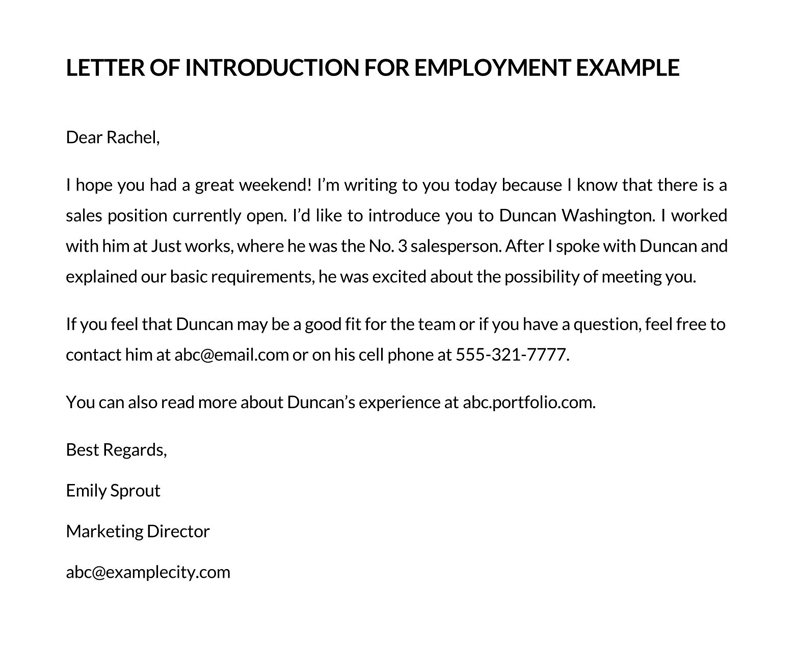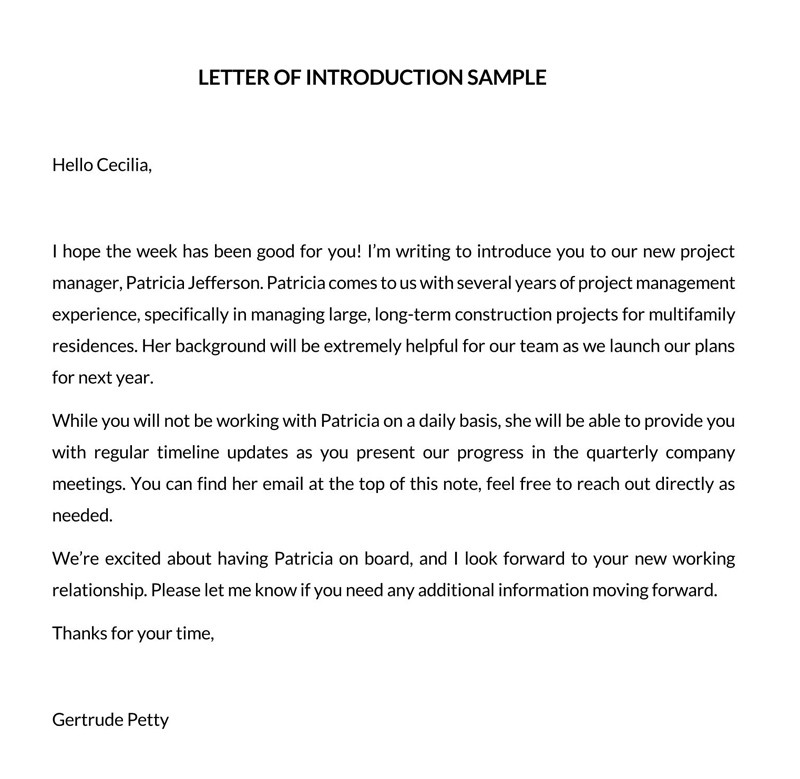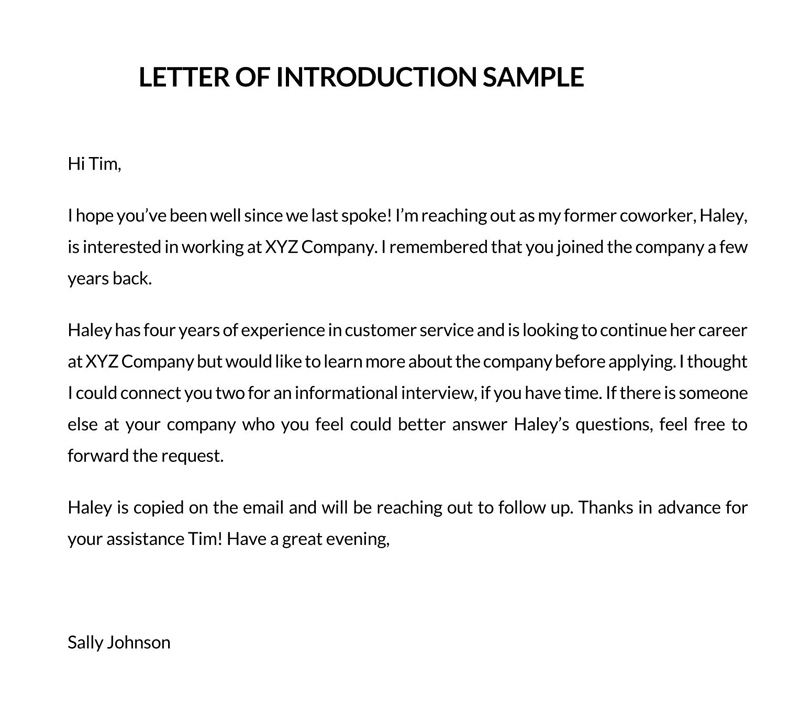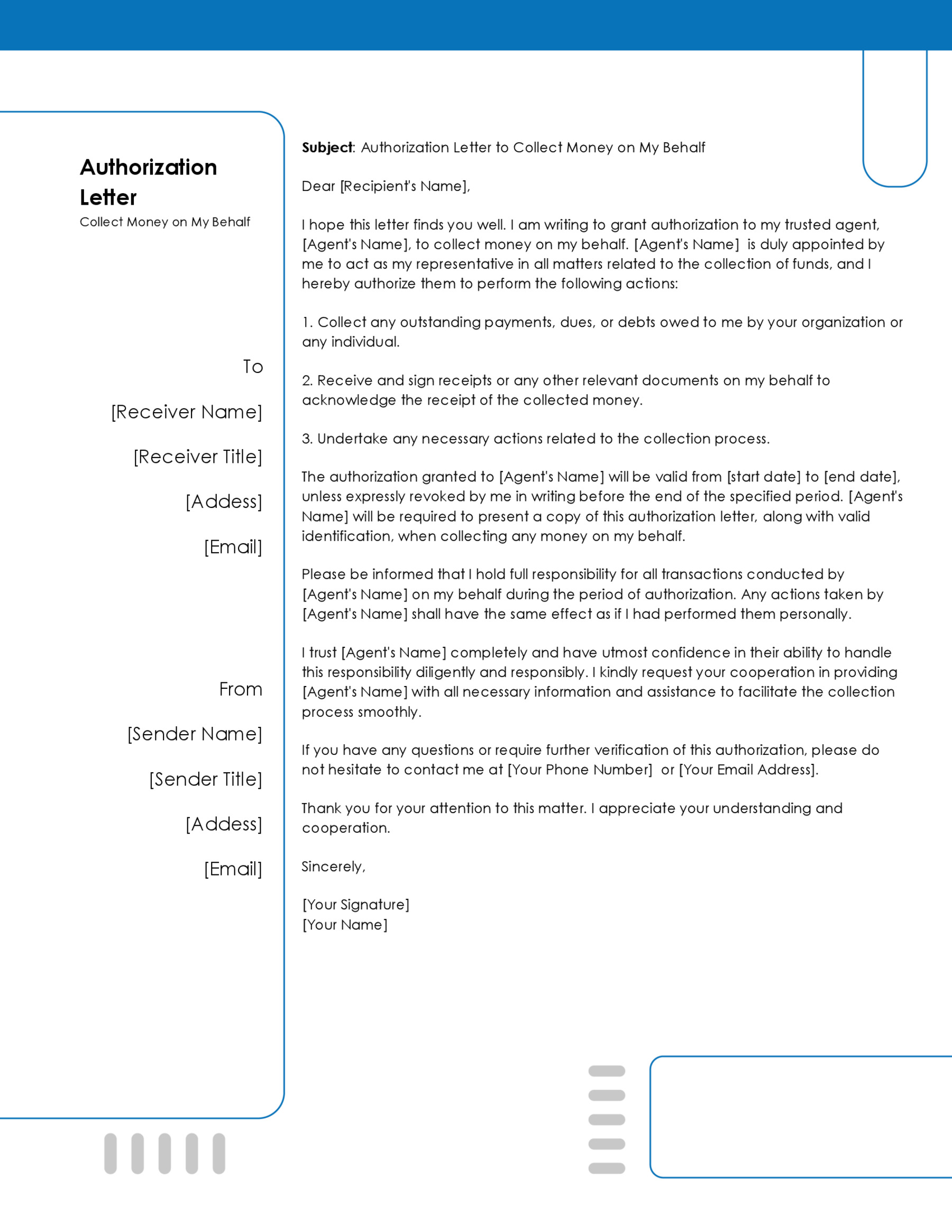For most professionals, networking is an integral part of their career. Connecting with other professionals can lead to the discovery of new opportunities. A letter of introduction can be a valuable tool for facilitating connections within an individual’s network. It can help individuals who are between jobs, moving to new cities, or having difficulty making connections. When used appropriately, it can facilitate beneficial collaborations between the involved parties and even result in business growth. Understanding what this letter is and how it can be used ensures that the writer participates in creating meaningful professional connections.
The Letter of Introduction for Employment is a piece of correspondence, usually written in a formal or informal email or physical copy, with the sole aim of introducing two parties within an individual’s network.
This letter can help a job seeker attain a position in a particular industry, build new professional relationships, or enable business growth and collaboration. It is a polite networking tool that helps save the reader time by adequately structuring vital details such as context and background about the individual being introduced.
Templates for You



Types of Letters
The letter of introduction can be used to facilitate various connections. The various types of connections foster it to be used for different reasons. Other than enabling a job seeker to connect to an employer, this letter can be used to introduce two coworkers to each other, connect business owners to clients or customers, introduce a new team member, connect freelancers or contractors to companies, or introduce professionals to each other.
Cover letter Vs. Letter of introduction
The differences between a cover letter and a letter of introduction for employment are very subtle. For instance, a cover letter is sent to respond to a job application, whereas an introduction letter is not sent in response to a job posting. The cover letter also directly addresses what a company or organization is looking for, which may not always be the case for such a letter. Lastly, a significant difference is that the job seeker must write a cover letter. In contrast, a letter can be written by either the job seeker or another individual facilitating the introduction.
Drafting the Letter
The letter of introduction should provide concise information about the individual being presented to the third party. However, the introduction letter does not act as a resume, recommendation, or cover letter. It mainly explains why an individual is writing the letter and how the third party will benefit from the introduction.
The letter should contain a few standard components, regardless of the person’s reason for drafting it. Its message should be clear when conveying critical information about a referee to avoid misinterpretation by the reader.
Sending the letter via email today is a common practice, as it is a faster and easier means of conveying brief information. The following are essential elements that should be included in the introduction letter:
Greeting/Salutation
The letter should begin with a salutation that addresses the reader by name. It should be followed up by a first line that indicates a casual and friendly greeting. The line helps demonstrate that a connection already exists between the writer and the reader of the letter.
Body of the letter
Next, the body of the letter should provide context. The information contained in the body ensures that the reader fully understands the message the writer is conveying. The details indicated should be straightforward.
The following components should be highlighted in the body of the letter:
Explain the reason
The writer should begin by indicating a purpose for writing the employment letter. A link between the letter’s purpose and why the reader is involved should be evident from the information provided. The purpose should be specific to the reader to help the writer establish why the letter is important.
Introducing the parties
The full names of the individuals being introduced should be indicated. In addition, an explanation as to why the two parties are being introduced should also be provided. The reason indicated should be relevant to the reader.
Include relevant details
The writer should highlight a few relevant details about the person being introduced. Important details like the name, current position, titles held, functions carried out, and other relevant information about the referee should be summarized to act as a guide for the reader. The writer should provide a brief overview of what the referee’s role is and how the referee has made certain accomplishments that may interest the reader. The details help draw a connection between the referee and the reader.
Beneficial aspects of the parties
The writer should highlight qualities about the referee that is likely to benefit the reader. The referee’s experiences can also show how both parties are likely to benefit from a collaboration. The letter may also indicate the writer’s plans to facilitate an in-person introduction.
Contact information of the referee
The referee’s contact details should be included in the letter. In an email, the details can be indicated in the ‘CC’ of the letter. However, if the writer feels that the reader may be uncomfortable with the CC, it should be avoided. Instead, the writer should indicate multiple contacts via which the referee can be reached.
Conclusion
The letter should wrap up with any other information that may not have been included. The information should be concise to avoid being too lengthy. The writer should ensure that final solid statements are indicated.
The following information should also be included in the final paragraph:
Conclude with next steps
The letter should conclude by indicating what next steps need to be undertaken by the reader, the referee, or the letter’s writer. The individual responsible for taking the particular actions should be mentioned by name. The writer should also appreciate the reader for taking the time to go over the letter.
Your name and job position
The writer should end by signing off with a professional phrase such as ‘Sincerely,’ ‘Thanks,’ or ‘Best regards,’ among others. If necessary, the phrase should be followed by the writer’s full name, job title, and contact details. Finally, a physical introduction letter should contain the writer’s signature, which typically appears before the contact details.
Free Template for Introduction Letter for Employment Opportunity
[Your Full Name]
[Your Job Title]
[Your Company/Organization]
[Your Address]
[City, State, Zip Code]
[Your Email Address]
[Your Phone Number]
[Today’s Date]
[Recipient’s Full Name]
[Recipient’s Job Title]
[Recipient’s Company/Organization]
[Recipient’s Address]
[City, State, Zip Code]
Subject: Connecting Two Exceptional Professionals: [Candidate’s Name] & [Recipient’s Name]
Dear [Recipient’s Name],
I hope this letter finds you in good spirits and thriving in your endeavors. As someone who has always admired the innovative work at [Recipient’s Company/Organization] and having had the pleasure of collaborating with you in the past, I am reaching out to facilitate a connection that I believe could be of great mutual benefit.
It is my pleasure to introduce [Candidate’s Name], a distinguished professional in the [Candidate’s Industry/Field] with a proven track record in [Brief Description of Key Achievements/Skills]. [Candidate’s Name] is currently exploring new opportunities that align with [his/her/their] expertise and passion, particularly in environments that value [mention specific values or goals, e.g., innovation, sustainability, growth].
[Recipient’s Name], knowing your commitment to [mention a specific goal, project, or value of the recipient’s company], I immediately thought of [Candidate’s Name] when considering professionals who could contribute significantly to your team. [He/She/They] bring[s] a wealth of experience and a fresh perspective that could support [Recipient’s Company’s] goals, particularly in [mention relevant areas, projects, or initiatives].
While this is not a formal recommendation, I am confident in [Candidate’s Name]’s abilities and potential to add value to [Recipient’s Company/Organization]. I have cc’d [Candidate’s Email] on this email to facilitate a direct conversation, should you see a potential fit or wish to explore this further.
Thank you for considering this introduction. I believe in fostering meaningful connections within our professional community and am hopeful that this could lead to a fruitful collaboration for both [Candidate’s Name] and [Recipient’s Company/Organization].
Please feel free to reach out to me directly should you have any questions or wish to discuss this in more detail.
Warm regards,
[Your Full Name]
Samples of LOI for Employment
Sample 01
Subject: Introducing a Promising Candidate for the Software Developer Role at TechGenix
Dear Mark,
I hope this message finds you well. Given our successful collaboration on past projects, I am excited to reach out with an opportunity that I believe could be of great benefit to TechGenix. It is my pleasure to introduce Alex Rivera, a former colleague of mine, who has consistently demonstrated outstanding abilities in software development.
During his tenure at Innovatech Solutions, Alex led the development of our flagship application, significantly enhancing its performance and user engagement. His expertise in Python and JavaScript, coupled with his innovative approach to solving complex problems, was instrumental in the project’s success. I am confident that Alex’s technical skills and his proven track record of delivering high-quality software solutions would make him an invaluable addition to your development team.
What impresses me most about Alex is his commitment to continuous learning and his ability to adapt to new technologies quickly. For instance, he spearheaded a company-wide initiative to adopt containerization, which dramatically improved our development pipeline’s efficiency. His leadership in this area not only showcases his technical prowess but also his capability to drive change and improve processes.
I have cc’d Alex on this email to allow for a direct connection between you two. He is very interested in the Software Developer position at TechGenix and is eager to discuss how his background, skills, and aspirations align with the needs and goals of your team. I believe a conversation would be beneficial for both parties.
Thank you for considering this introduction. I am excited about the potential for Alex to contribute to TechGenix and am looking forward to possibly seeing you two collaborate.
Warm regards,
Jane Doe
Sample 02
Subject: A Warm Introduction for Taylor Morgan
Dear Samantha,
I hope this message finds you well. As we’ve shared many successful projects, I value our professional connection deeply. Today, I’m reaching out on a more personal note to introduce a close friend, Taylor Morgan, who is embarking on an exciting new chapter by moving to New York and is in search of opportunities that align with her passion and expertise in the fashion marketing sector.
Taylor, a gifted marketing strategist with a flair for innovative campaigns, has a track record of elevating brand narratives to new heights. Her recent project led to a notable increase in online engagement and sales for a well-known brand, showcasing her ability to blend creativity with effective marketing strategies seamlessly.
The reason for Taylor’s move is multifaceted, combining personal growth with the desire to make a significant impact in a city known for its vibrant fashion scene. Her admiration for VogueStyles, particularly your commitment to sustainable fashio, has motivated her to seek an opportunity where she can contribute her skills and grow professionally.
I have cc’d Taylor on this email to connect you directly. She is eager to explore how her background, creativity, and strategic thinking can support VogueStyles’ goals and add value to your team.
Thank you for considering this introduction. I’m confident that Taylor’s professional ethos and innovative approach to marketing could be a great asset to VogueStyles.
Best regards,
Jordan Lee
Analysis
The introduction emails effectively showcase the candidates’ strengths and potential contributions to the targeted roles within their desired companies. Highlighting technical skills, project leadership, and successful outcomes in the first email underlines the candidate’s capability and readiness to add value to the software development team. Mentioning a history of successful collaboration between the sender and the recipient adds credibility to the endorsement. The second email emphasizes marketing expertise, creativity, and the ability to significantly impact brand narratives, aligning the candidate with the recipient company’s ethos, especially its commitment to sustainability.
Both emails skillfully use specific examples to provide concrete evidence of the candidates’ abilities, enhancing the persuasiveness of their introduction. The inclusion of personal motivations for seeking new opportunities adds a relatable human element, fostering a connection between the candidate and the recipient. Structured to make a compelling case for the candidates, these emails are effective networking tools, opening doors to potential professional opportunities. The direct connection facilitated between candidates and recipients, combined with a warm and professional tone, makes these introductions potent in highlighting the candidates as valuable assets to their target companies.
Conclusion
A LOI for employment helps facilitate the introduction of professionals that are unknown to each other. It can be written for a variety of reasons. This letter is not a resume, cover letter, biography, or recommendation letter. Instead, it mainly centers on why it has been written and how the reader can benefit from an introduction to a referee. The writer of the letter usually has an existing relationship with the reader and can therefore use a familiar tone in the letter. The writer may either write a physical copy of the letter or send an email.
The information included in the letter ensures that the context and background of the referee are provided. The writer should ensure that the information provided is clear and concise. A lack of clarity can lead to misinterpretation by the reader. The letter should also be tailored to the situation to ensure effective communication with the reader. The writer is required only to provide relevant information. Including too many details could lead to the formation of a lengthy introduction letter. The writer can follow up on the letter to monitor if progress has been made since it was drafted.












